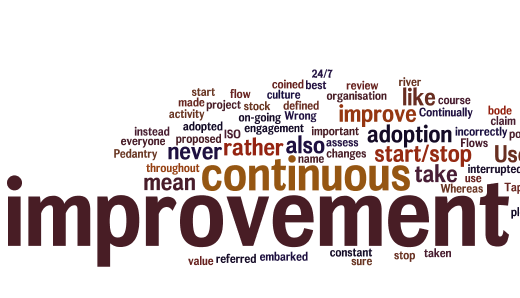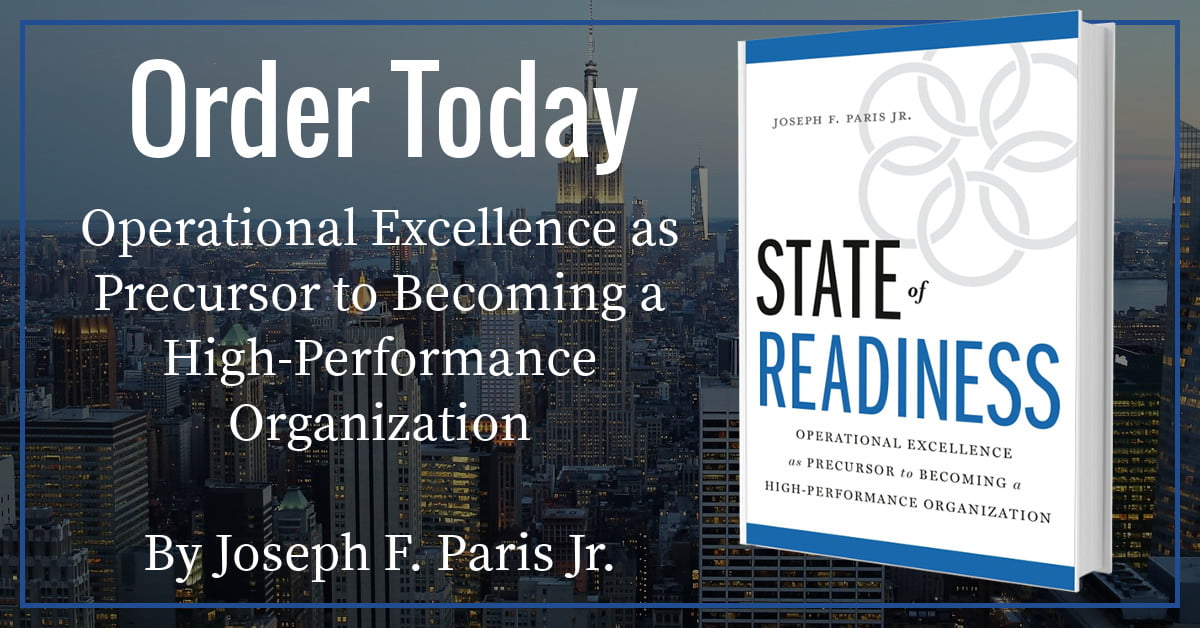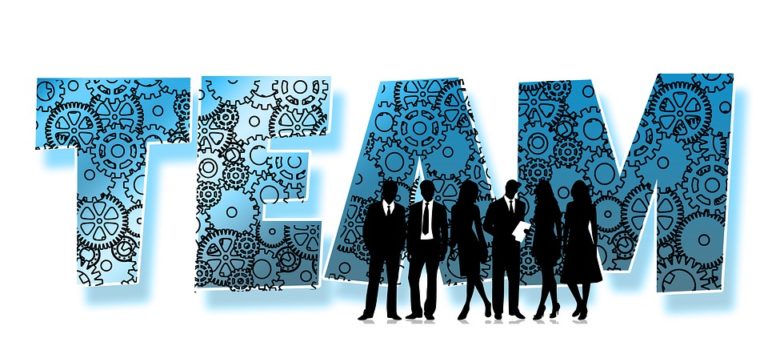How do you realize the full potential of your Continuous Improvement Initiative?
In all of my years in business – both as an employer and as a consultant – I have never seen anyone hire someone who was uninspired and not wanting to work for the company that just hired them.
Over just as many years, I have heard managers say, “These people are lazy”, or “They have to be baby-sat to get any production”, or “They just don’t care”, and such-like.
How is it that such uninspired individuals are employed at these companies if they were never hired to begin with – as well as not fired?
Employees – like children – are a product of their upbringing and environment.
As a child comes into this world so does an employee come to work for a company. And as a child – filled with wonder and excitement – the new employee needs structure, nurturing and support to grow to the best of their abilities. The employee looks to management for these key ingredients for growth – and it is the responsibility of management to supply this support if there is any reasonable expectation that the employee will grow to endorse and benefit the company in a meaningful way.
Above all else, employees need to be respected and valued.
But in most cases, employees are given wholly inadequate support and guidance from the very first day they are hired. And so the inspiration begins to erode.
Most new employees (but not all) will sit through a class conducted by Human Resources on the “do’s and don’ts” as well as the “how-to’s” of the company. They will certainly be instructed as to how to properly fill-out insurance forms and other documentation. During this exercise, the employee has a passing thought that he is a cog in a process – and he leaves the class somewhat apathetic.
The employee then arrives at their designated department and is introduced to the manager – unless the manager is on assignment or otherwise elsewhere. In either case, the manager will make it a point to introduce the new employee to colleagues and show them around. Then the manager will proceed to assign a “mentor” from the department to bring the “new kid” (FNG) up to speed. With some good luck, the mentor is capable. But normally, the mentor just shows the new employee the ways of the department, perhaps the various short-cuts to the system that might exist, and ways of keeping out of trouble.
Add to this a couple of projects which are “high-priority” and require the forfeit of a couple weekends and holidays – only to be scrapped without explanation or recognition of the efforts made – and the process of dulling is almost complete.
And the coup-de-grace: tell the employee that they have to make some considerable improvement in some aspect of the business, but they will get no additional resources or budget. In fact, they have to accomplish the impossible, if not arbitrary, with less. If they fail, it will be a black-mark on their record.
The once inspired new hire has been properly and completely beaten into a cog. And so it goes…
Though I completely agree with the principles and methods espoused by James Womack and his works through the Lean Enterprise Institute – and I also agree with the research of Joseph Juranwhose works led to the formalization of Six Sigma – this unwillingness of the rank-and-file (born of cynicism and skepticism) IS the soft-underbelly, the weakness, of any Continuous Improvement initiative and MUST be overcome for the initiative to be successful.
What it takes for any company-wide initiative to realize its potential is Leadership.
A Leader is not a leader by rank, or title, or lineage. A leader is a leader because people are willing to follow. If a leader looks behind and nobody is following, he is not a leader – he is just out for a walk.
The company may or may not be able to successfully re-orient its employees under the existing individuals in management. This success depends completely upon the manager being respected by the employees. If the manager is not respected by those who are supposed to follow, then the manager must be removed from his position. If the manager can be properly coached, they can stay-on with the company – but elsewhere.
A Leader is not beholden to nostalgia.
The company cannot have managers who live in the past – neither on their personal past glories nor on the past glories of the company. To learn from the past, live in the present and plan for the future; that is the proper orientation of a manager to the concept of time.
A Leader is a humble servant to those who follow.
The company cannot have managers who are about their individual self, but rather to those under their charge. A manager knows to take the blame for failures and to give the credit to those he serves. In fact, you can easily tell a poor manager – as a poor manager makes no mistakes. There are only two possibilities for this – they are either not pushing themselves and their department OR they are passing the blame to someone else. Of course, if the company is intolerant of failure then the root-cause of the problem exists at the very top and must be changed there.
A Leader is patient, but pressing.
The company who dedicates itself to true transformational change must be patient. What needs to occur for this process to begin is to change employee dispositions and attitudes so that they are reinvigorated, trusting and supportive of the company – and this takes time. However, the company must press forward using constructive methods and hold individuals accountable for their own progress and the advancement of the initiatives for which they are responsible. The most obvious method of forming trust is to support, in a financial sense, the transformation of the team – by giving them resources and budgets to begin. Perhaps this is the very first Improvement in the Continuous Improvement initiative.
Agents of Change Are Never Hugged
Although people sometimes complain about their circumstance and clamor for change, they are very resistant to its actually happening – “Better the Devil you know than the Devil you don’t”, as the saying goes. And a leader should expect that there will be much trepidation and resistance in effecting any true level of transformational change.
The very first action a leader must complete is to define the initiative and its purpose FOR THEMSELVES – so that they posses a full understanding of what is going to be asked of others and the purpose. What, precisely, is the nature of the initiative? How will we set about working towards these goals? What is needed of whom and when in order to achieve these goals? And most importantly, “Why are we doing all of this?”
They should begin the development of the program, and also minimize the anxiety of those involved, by engaging the entire eco-system in defining the initiative. This gives everyone involved “ownership” in the process and makes them “stakeholders” in the results. “Pride in ownership” is a very powerful motivator – even more than monetary reward (which can be manipulated by management too easily and actually breed distrust).
- Customers: What do they truly want? Not what you THINK they want (unless it a paradigm shift – such as
was the first production-line automobile). - Employees: What knowledge do they already posses which can be leveraged across the organization
- Suppliers: How can we involve them to better ourselves?
But remember; only God is perfect. To paraphrase General George Patton, “Perfection is the enemy of good. By this, I mean that a good plan executed with great vigor now is better than a perfect plan next week. Success is a very simple thing; and the determining characteristics are confidence, speed, and audacity – none of which can ever be perfect, but they can be good.”
Once the proper leadership skills are instilled, the strategy and tactics have been defined, and value-chain buy-in is achieved – the roll-out of the Continuous Improvement program can commence.
To ensure an optimal realized result:
Communicate; In a succinct manner the nature of the initiatives. All details of the initiative will be communicated in a clear and concise manner so that there is no room for miss-interpretation. Also communicate the on-going progress of the initiative – being sure to recognize notable individual achievement. Leave the political correctness, platitudes, and hyperbole for the propagandists.
Align; Identify, allocate, and align all relevant resources so that the mission is properly supported and the objectives will be met. Do not ask people to do what they are ill-prepared to accomplish, for the result will most often be failure.
Commit; Commit – and commit unreservedly. If the program has been planned well and is supported better, then the job is properly done – and the initiative will be as great a success as can be achieved.
Debrief; The team will perform an after-action exercise to review what has occurred versus the original plan, identify exceptions and their consequences (could be negative OR positive), and communicate the new knowledge.
Adjust; Make sure to take careful and timely consideration of the information generated during the debrief so that you might react in a thoughtful and meaningful manner – all the while maintaining the momentum.
In the end; the philosophies, approaches and methods contained in Lean and Six-Sigma are proven to be effective tools in the pursuit of perfection. However, a tool is of lesser value without a motivated and skilled individual – working as part of an orchestrated team – to select it wisely and to wield it in a constantly progressing manner.
With the right leadership; the environment will be optimal for true transformational change to occur so as to propel the organization forward and realize the potential of the Continuous Improvement initiative – or for that matter, any initiative.
 Paris is the Founder and Chairman of the XONITEK Group of Companies; an international management consultancy firm specializing in all disciplines related to Operational Excellence, the continuous and deliberate improvement of company performance AND the circumstances of those who work there – to pursue “Operational Excellence by Design” and not by coincidence.
Paris is the Founder and Chairman of the XONITEK Group of Companies; an international management consultancy firm specializing in all disciplines related to Operational Excellence, the continuous and deliberate improvement of company performance AND the circumstances of those who work there – to pursue “Operational Excellence by Design” and not by coincidence.
He is also the Founder of the Operational Excellence Society, with hundreds of members and several Chapters located around the world, as well as the Owner of the Operational Excellence Group on Linked-In, with over 25,000 members.
For more information on Paris, please check his Linked-In Profile at: http://de.linkedin.com/in/josephp








